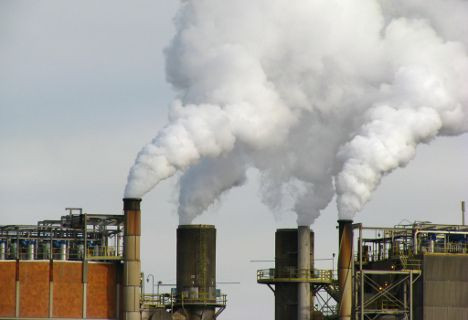High Cancer Rates In Areas Near Refineries And Industrial Plants: Why Is Benzene Getting Into The Environment?

Benzene is a carcinogenic industrial chemical that has been known for decades to cause cancer, yet companies who use or produce it for industrial processes still release some amounts of the chemical into the environment. Previously, benzene was dumped into rivers, and because it's a volatile organic compound with a low boiling point, it can evaporate more easily than water.
Benzene can cause a variety of leukemias and even bone marrow failure, which is a serious medical condition where the body does not properly produce red blood cells because of a glut of mutations of the cells residing there. According to the American Petroleum Institute in 1948, "it is generally considered that the only absolutely safe concentration for benzene is zero." The U.S. Department of Health and Human Services classifies benzene as a carcinogen. Benzene is so dangerous because the chemical can break the strands of DNA, which can cause irreparable damage to genes and lead to cancerous mutations.
A new study published in the journal Cancer has shown that there is a higher incidence of a particular form of blood cancer in people who live around industrial plants and petrochemical refineries. Non-Hodgkin's lymphoma (NHL) has been on the rise in the U.S., mirroring the rise of industry in the country. To directly determine the relation and risk of NHL to plant proximity, Dr. Christopher Flowers and colleagues of the Lymphoma Program at Emory University in Atlanta, along with Catherine Bulka, MPH, took publicly available data and cross-referenced information. Specifically, they examined data from the Environmental Protection Agency (EPA) and the U.S. Census Bureau concerning the location of industrial plants and cases of NHL in the state of Georgia between 1999 and 2008. Because the EPA tests the amount of benzene released into the soil, water, and air surrounding plants, a correlation was able to be drawn.
The metro areas of Atlanta, Augusta, and Savannah saw the highest incidences of NHL, when controlled for population size, age, sex, and race. Sites known to have been locations of previous benzene releases saw a greater than normal incidence of NHL in the metro Atlanta area and one site in Savannah. The researchers calculated that for every mile a person lived away from a site, there was a decrease of 0.31 percent in his or her risk of developing NHL.
"Our study is the first to examine the relationship between passive benzene exposure and the incidence of non-Hodgkin lymphoma at the state population level," said Bulka. "Our findings are limited without similar studies to corroborate our results, but we hope that our research will inform readers of the potential risks of living near facilities that release carcinogens into the air, groundwater, or soil."
There are heavy government regulations about the release of benzene into the environment, but many times this fails to prevent spills and even purposeful dumping. The largest exposures to benzene are from smoking and accounts for half of U.S. exposure to benzene.
Source: Bulka C, Nastoupil L, McClellan W. Residence proximity to benzene release sites is associated with increased incidence of non-Hodgkin lymphoma. Cancer. 2013.
Published by Medicaldaily.com



























